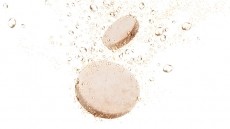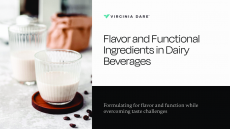Scientists report 'guidelines' for tagatose use in food and beverages

As reported recently by FoodNavigator-USA, Belgian firm Nutrilab NV is preparing to introduce low-calorie, low glycemic bulk sweetener Tagatose to North and South America later this year, six years after dairy giant Arla Foods pulled the plug on the ingredient claiming it was not commercially viable.
D-tagatose, which is 92% as sweet as sucrose and tastes very like it, has 1.5 cal/g compared with 4 cal/g for sucrose and does not raise blood sugar levels, making it suitable for diabetics and pre-diabetics. It also has prebiotic effects.
It was first produced in industrial quantities in 2002 via a joint venture between Arla Foods and Nordzucker called SweetGredients. But production stopped in 2006 after the pair struggled to make a business case.
However, Nutrilab NV, a subsidiary of Belgian company Damhert, has just opened a 10,000t tagatose production facility near Rome, Italy, and says it is confident it can succeed where Arla failed.
New data
Korean scientists have now reported a comparison of the relative sweetness of tagatose (CJ Corp., South Korea) to other sweeteners, including sucrose, sucralose, erythritol, rebaudioside A over a wide range of sweetness commonly found in foods and beverages.
The data, published in the Journal of Food Science, will help to provide basic guidelines when considering the application of tagatose in foods and beverages, they said.
Thirty-four people were used to evaluate the sweetness, bitterness, astringency, chemical-like sensations, and sweet aftertaste of the sweeteners over a range of sweetness levels, ranging from 3 to 20% sucrose.
The results showed that “tagatose elicits a sweet taste without undesirable qualities (bitterness, astringency, chemical-like sensations),” they said.
The sweetness of tagatose was found to increase at an identical rate to sucrose, which meant that “tagatose produced about the same relative sweetness to sucrose across the concentrations tested”.
The other sweeteners, however, behaved differently and the relative sweetness of them was highly concentration dependent.
“This fundamental data together with the new information about the sensory characteristics of tagatose and other sweeteners can serve as basic guidelines when considering their application in foods and beverages,” they concluded.
Source: Journal of Food Science
Volume 77, Issue 9, pages S323–S328, doi: 10.1111/j.1750-3841.2012.02844.x
“Sensory Characteristics and Relative Sweetness of Tagatose and Other Sweeteners”
Authors: T. Fujimaru, J-H. Park, J. Lim













